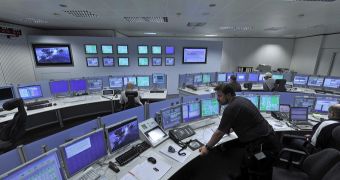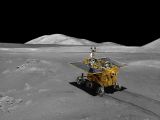Officials with the European Space Agency (ESA) say that the organization's vast network of tracking, monitoring and telemetry stations will aid the China National Space Administration (CNSA) keep track of its newest mission to investigate Earth's Moon.
CNSA is scheduled to launch the Chang'e-3 lunar exploration mission on Sunday, December 1, from Launch Complex 2 at the Xichang Satellite Launch Center, in Sichuan province. It represents the second stage of the ambitious Chinese Lunar Exploration Program.
The mission will include a lander that will spend 5 days conducting science in lunar orbit, before landing on the surface. Once this objective is successfully achieved, the stationary platform will release a small-scale rover for additional investigation. Chang'e-3 is the first attempt at a soft landing on the Moon in more than 37 years.
During the spacecraft's five-day lunar cruise, ESA will be providing critical telemetry and tracking support for CNSA mission controllers. The collaboration will conclude once the Chinese lander touches down in the Sea of Rainbows, on December 14. The last mission to land on the Moon was the Russian Federal Space Agency's (RosCosmos) Luna-24 vehicle, in 1976.
The CNSA Control Center will start communicating with Chang'e-3 immediately after launch via the ESA Kourou Station, which is located next to the Kourou Spaceport, in French Guiana. Other stations around the world will kick into gear once the spacecraft reaches lunar orbit.
The ESA tracking effort is orchestrated from the Estrack Control Center, at the space agency's European Space Operations Center (ESOC), in Darmstadt, Germany. Once the mission lands, control will be exerted through CNSA's tracking stations at Kashi and Jiamusi.
“We are proud that the expertise of our ground station and flight dynamics teams and the sophisticated technologies of our worldwide Estrack network can assist China to deliver a scientifically important lander and rover to the Moon,” says the director for Human Spaceflight and Operations at ESA, Thomas Reiter.
“Whether for human or robotic missions, international cooperation like this is necessary for the future exploration of planets, moons and asteroids, benefiting everyone,” he concludes.

 14 DAY TRIAL //
14 DAY TRIAL // 
